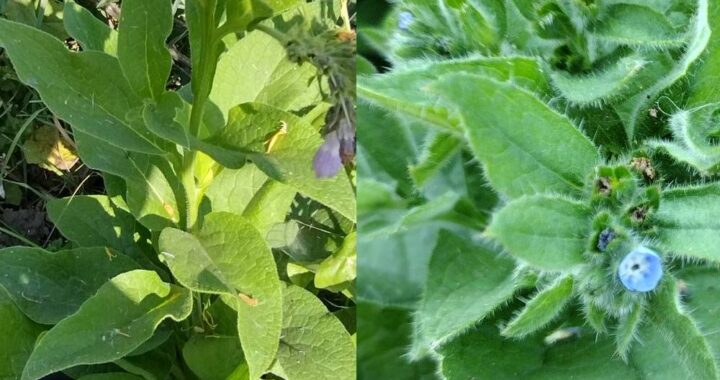Last year, I had a bunch of wasp’s nests in my yard. I kept getting bitten and stung. One time, I got stung in my eyebrow. The toxins almost immediately started flowing down into my eye, and it became completely swollen. It was incredibly painful. Everytime I got stung, I immediately ran to my garden for relief. While I have a large variety of medicinal herbs growing in my yard, I ran directly for a couple plants that most people consider to be weeds.
But weeds, right? They can be the bane of a gardener’s existence. Taking over everything and being super hard to eradicate… well, if you’ve seen my urban farm tour video, you know that I don’t really remove too many weeds. There are several reasons for that, and one of those is that many plants that we consider weeds actually have really powerful herbal benefits. Here at the 5 that are most common that you’ll find in my yard:
Field Bindweed (Wild Morning Glory)
Wild Morning Glory is also called Bindweed because it grows up and over other plants and “binds them up.” The latin name is Convolvulus arvensis. It’s actually a pretty noxious weed, and this is one of the few that I actually pull. It doesn’t do much good though, because the roots can be 20 feet deep and 18 feet horizontally! No matter what, it keeps coming back.
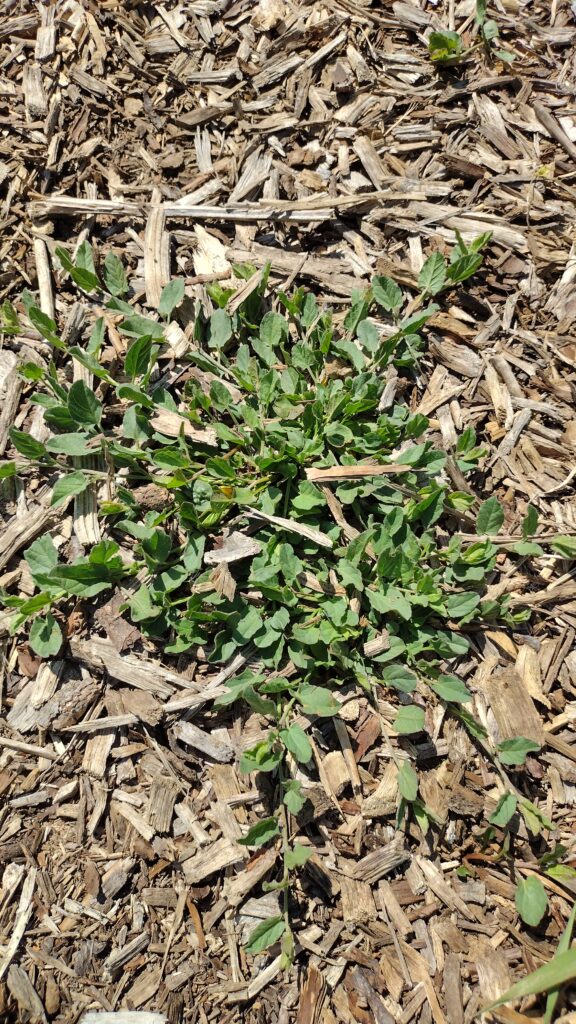
Before it climbs up on other plants, it grows pretty flat along the ground. It has white flowers, about 1.5 inches wide. In contrast, the annual Morning Glory has larger flowers that are other colors, like purple and blue, and the leaves are further apart on the vines.
For herbal purposes, the root can be used to create a juice or a resin. It’s also common to use the flowers or leaves to create a tea. The tea can be used as a laxative, and can be used to treat fevers. It can also be used as a wash to treat spider bites and wounds.
So now that you know more about Bindweed, you can decide if it’s truly a nuisance, or if it’s worth keeping around!
Purple Dead Nettle
Now Purple Dead Nettle, aka Lamium purpureum is a fairly harmless “weed”. Purple Dead Nettle appears in early spring, and disappears by the end of May, and in the meantime, it provides some lovely color amongst the verdant green of spring. I don’t pull it.
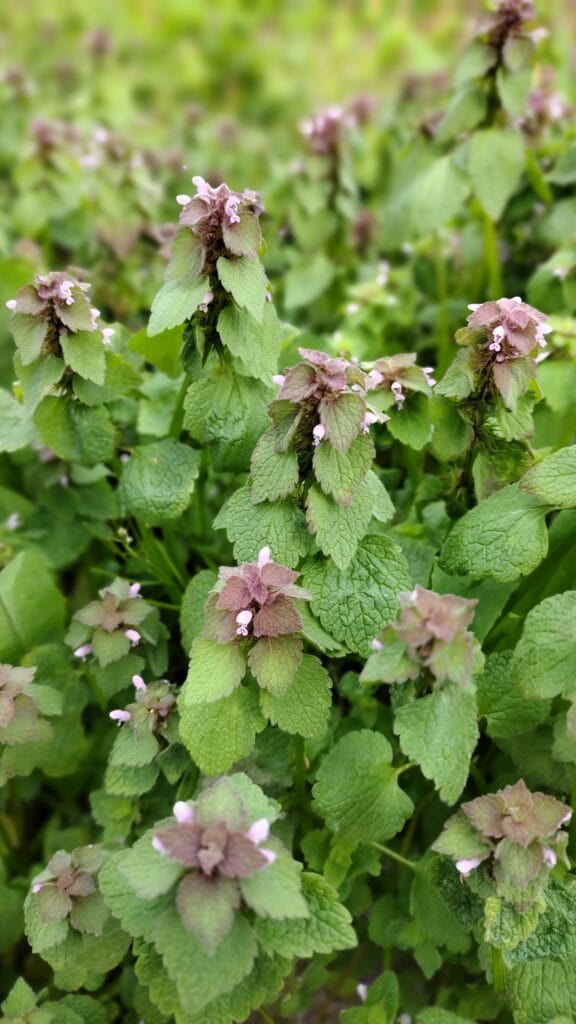
Now, one thing to know is that Purple Dead Nettle is NOT the same as nettles. It’s called Dead Nettle because the leaves look vaguely like nettles, but they’re “dead” because they don’t sting. Dead Nettle is part of the mint family, which does mean that it spreads, but like I said, it just disappears as quickly as it appears. Purple Dead Nettle is a really safe way to learn about foraging and to get started using herbs in your cooking.
Dead Nettle grows about 10-12 inches tall and has a square stem, like all in the mint family. The leaves grow on opposite sides of the stem. The leaves grow closer together toward the top of the stem, where the flowers grow. The flowers are very tiny at the top of the stem, where the leaves also turn a little purple.
Purple Dead Nettle has great anioxidant and anti-inflammatory uses. Simply cut the flowering tops and use them as you would any other green – in soups, salads, smoothies. It would also be really good in a pesto! It’s also an anti-fungal and has high amounts of vitamins C, A, and K, iron, calcium, magnesium, manganese, and of course, fiber, like most greens. Purple Dead Nettle *can* have diuretic and laxative effects, so you may want to start with a small amount and increase as you’re able to!
Cleavers
Cleavers, or Gallium aparine is a silly viney weed in the garden that has a sticky stem which “cleaves” or latches on to your clothing or even skin. As a weed, cleavers is very easy to pull and get rid of, but in my experience, they don’t cause a lot of trouble in the garden. You might also hear of them being called bedstraw, or other names that refer to its stickiness.
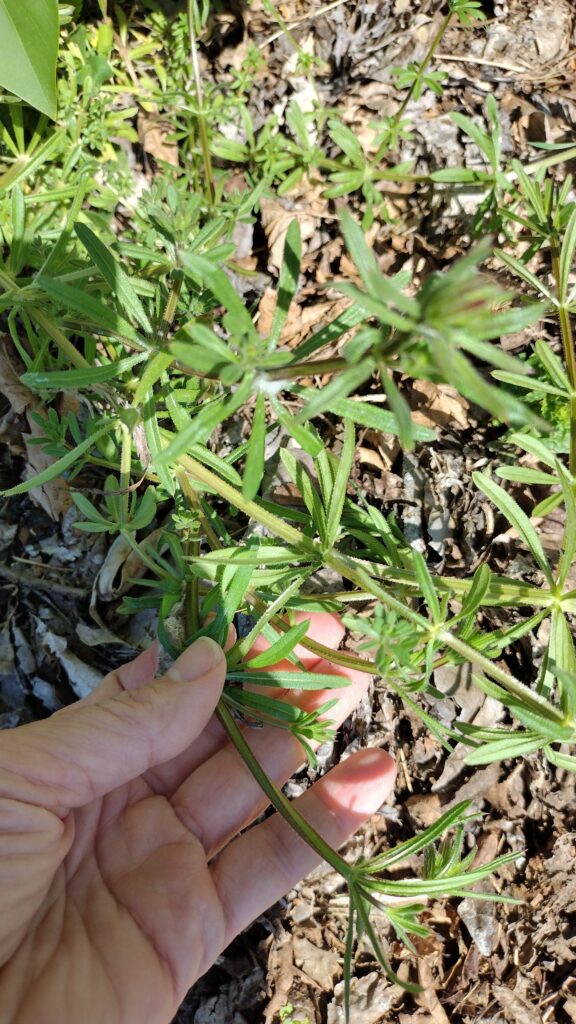
Cleavers are best known as a diuretic. They help with temporary water retention. Cleavers are mostly commonly dried and used as a tea, which helps clear stagnation and helps increase lymphatic flow. Since it appears in spring, it’s a great herb to use for a spring cleanse of your lymphatic system.
You can also use cleavers fresh, by making a tea that steeps overnight and then drinking it throughout the next day. Cleavers is cooling and anti-inflammatory, and can also be used in a poultice as for wounds and burns, and even psoriasis.
Cleavers grows in viney masses, with intertwining stems. The leaves are narrow and lance shaped, wider at the tip than at the base. They grow in whorls of 6-8 leaves along the stem.
Self Heal
Self Heal, or Prunella vulgaris is one of the most underrated weeds in the garden. You’ll find Self Heal growing low along the ground in flower beds and in amongst the grass in your yard. I actually transplanted some from my brother’s house in southern Oregon, just to find that I already have large amounts growing happily in my grass. Now I’ve cultivated it in my flower beds as well, so it doesn’t get stepped on.
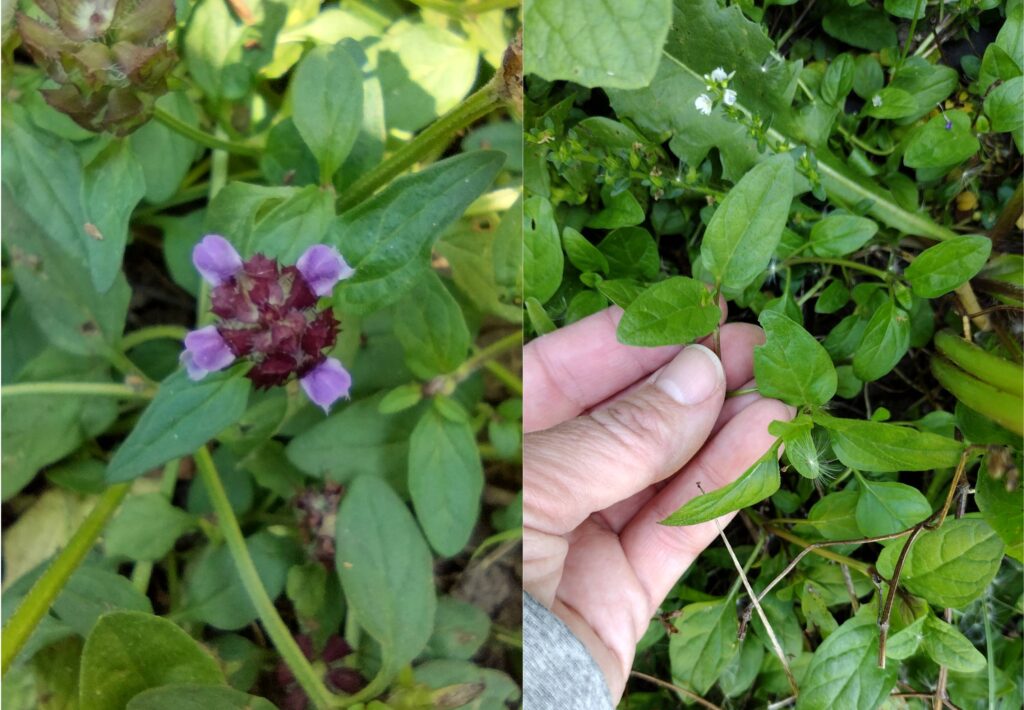
Self Heal is in the mint family, which is, of course, why is spreads so much in the yard. Because it’s in the mint family, that means it has the typical square stem and leaves on opposite sides. Self Heal is pretty low growing and has these neat purple flowers. with teeny little petals. This is such a small, but oh so mighty herb.
Self Heal is also one of the most studied herbs in modern medicine, with lots of information backing up its uses. Like most in the mint family, Self Heal is cooling. It’s also described as bitter. It may have a familiar taste if you try it- it tastes a little like rosemary!
Self Heal is anti-inflammatory, and high in antioxidants. It’s also a hemostatic, or will stop the flow of blood. It’s an antiviral and can be used to treat wounds, sore throats, ulcers, insect bites, and even Herpes simplex viruses. Self Heal can be used as a tea, or a tincture, it can be eaten in food, or used as an external wash.
Plantain
Plantain is another underrated herb, as far as I’m concerned. To be clear, we’re not talking about the produce that is similar to a banana. In fact, the Plantain that we’re talking about is the same plant as psyllium. You can actually dry the seeds and use them in the exact same way as pysllium. Buuuutttt….. they’re so much smaller, it will take a lot more. The medicinal Plantain that we’re talking about has two forms – plantago major and plantago lanceolata. Psyllium, that is used as psyllium husk or psyllium powder – which is often used in gluten free baked goods and is also the main ingredient in Metamucil, is plantago ovata, which is larger and cultivated specifically for the seeds.
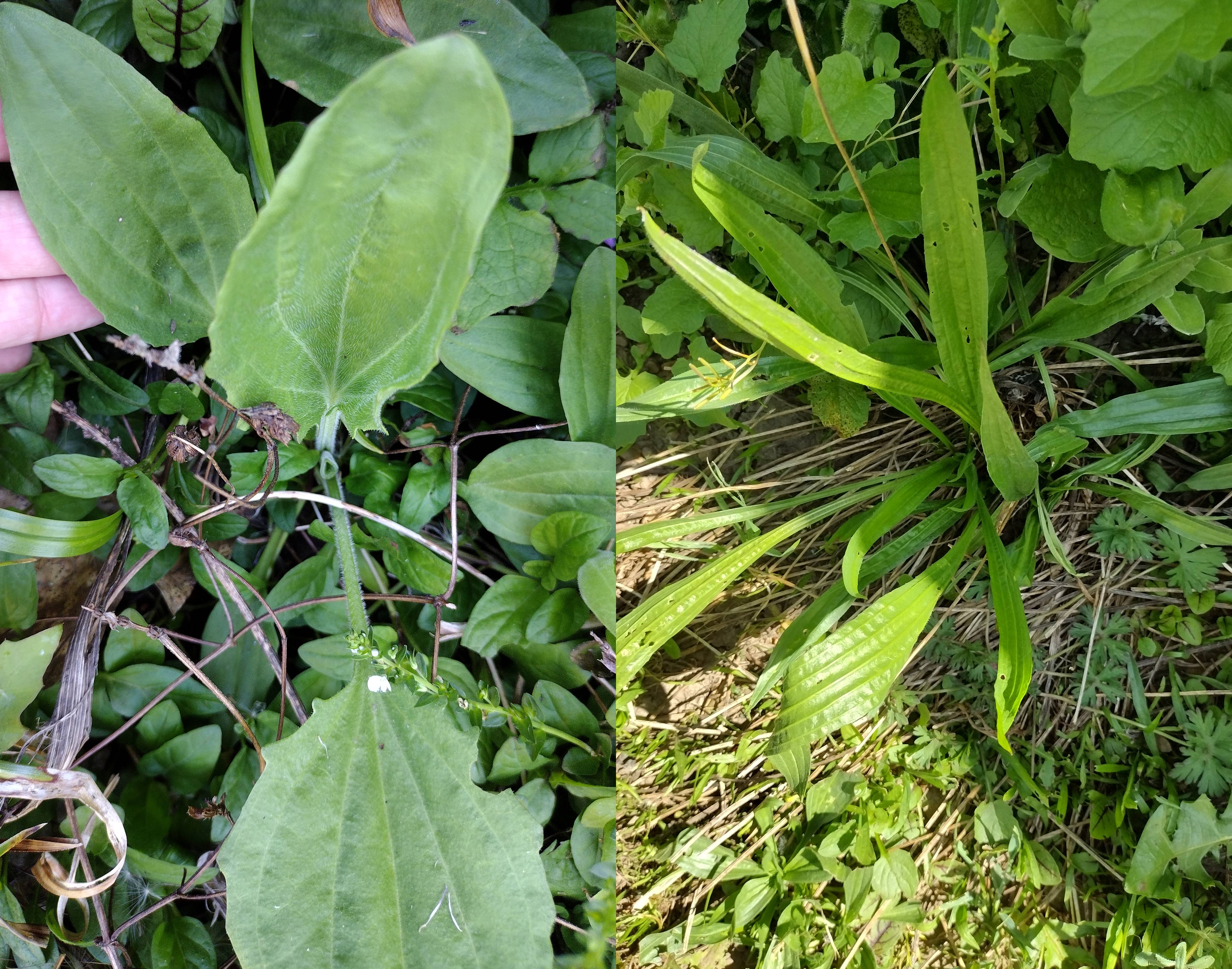
The types of Plantain are commonly called Wide Leaf Plantain or Narrow Leaf Plantain. Occasionally, I’ve heard of Narrow Leaf being called Ribbed Plantain. All the different types of Plantain can be used interchangeably. Plantain is a ubiquitous green plant with thick vertical veins going up the leaves. The Narrow-leafed variety has narrower spear shaped leaves, while the Wide-leaf has oval shaped leaves with slightly pointed edges toward the bottom of the leaf.
Narrow-leaf plantain will turn black if you try to dry it, but Wide-leaf usually dries just fine. That being said, Plantain is best used fresh, and in my experience, it’s best used topically as a poultice. Plantain is a drawing herb – that is, it will draw things out of the skin. Things like poisons in spider bites or mosquito stings, and things like splinters. To use it, simply take a leaf in your mouth and chew it up well, then place the wad of chewed up herb on your sting. It will feel immediate relief. Splinters might take a little longer – I usually use a bandaid to adhere it to my skin overnight. It’s been used traditionally for snakebites, rheumatism, and for drawing out the pus from sores and infections.
Plantain has a lot of other amazing uses too. It’s an antimicrobial, and anti-inflammatory, and can be used for UTIs, and it’s great for coughs, especially those caused by the smoke from wildfires. Each time I got stung by the wasps last summer, I ran immediately to my Plantain plants and chewed a little bit up to put on the stings!
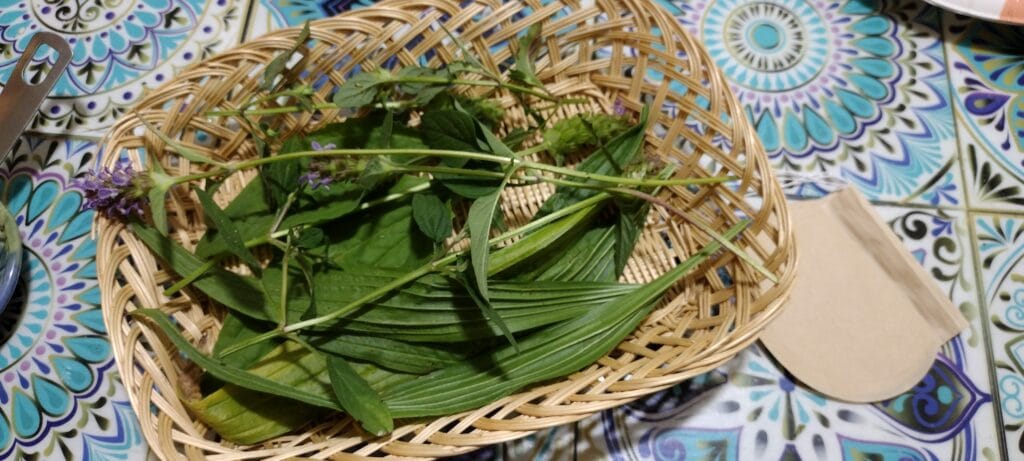
In fact, when I got that bee sting in my eyebrow, I made a poultice of Self Heal and Plantain (I put it in a tea bag, which you can see on the right in the photo above), and places that over my eye. It took the swelling down within just about 20 minutes. It was amazing. And to think – that happened with plants that some people consider to be weeds!
What weeds have you found to be useful in your garden? Let me know in the comments below!

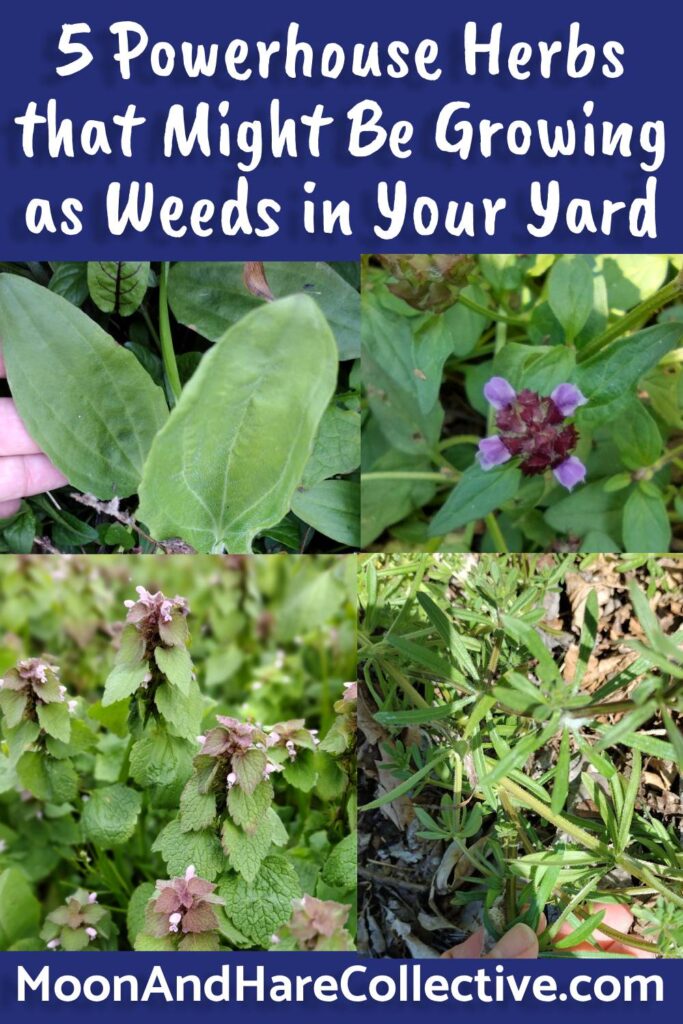
References:
Bindweed: Field Bindweed article from University of California Integrated Pest Management
Bindweed: Natural Medicinal Herbs
Purple Dead Nettle: Herbal Academy Article on Purple Dead Nettle
Purple Dead Nettle: Chestnut Academy
Purple Dead Nettle: Outdoor Apothecary
Cleavers: Traditional Medicinals
Cleavers: College of Naturpathic Medicine
Cleavers: Outdoor Apothecary
Self Heal: Commonwealth Herbs
Self Heal: Learning Herbs.com
Plantain: SalterGrove
Plantain: Learning Herbs

